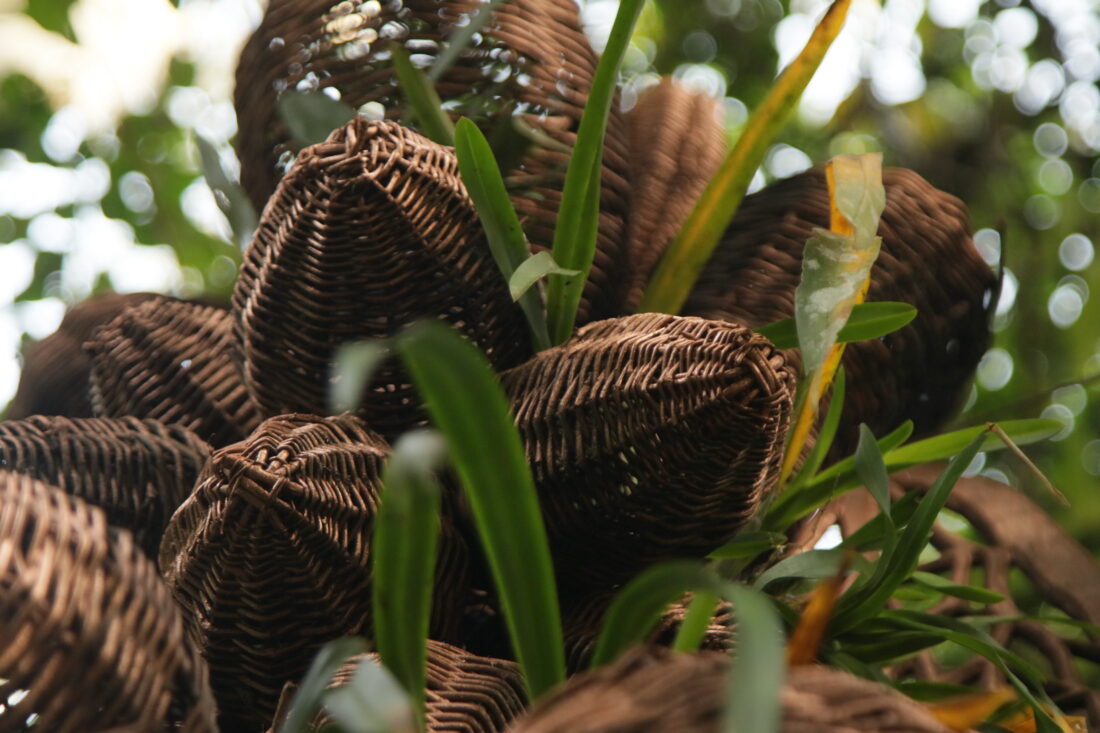Argentine visual artist Andrés Paredes recently spent time with the team at Awasi Iguazú to participate in our ongoing Awasi Artist Immersion programme, which has previously featured jewellery designer Angela Bulich and photographer Ingrid Weyland.
Born and raised in Misiones itself – the Northern province of Argentina where Relais & Chateaux lodge Awasi Iguazú is located – the experience allowed Andrés to stay close to what has, for him, been a significant source of his inspiration for many years.

“My entire artistic exploration revolves around the contemporary reinterpretation of this region’s landscape, exploring elements such as culture, nature and its people”, explains Andrés.
Whilst in-residence at Awasi, Andrés installed a biodegradable sculpture deep in the Atlantic rainforest near to the lodge.
This project drew on and was influenced by both the natural environment and the cultural legacy of the region’s indigenous population, the Guarani. As well as more recent immigrants, including the Jesuits who arrived in the 17th Century and built spectacular cities in the dense forests.

After all, the piece is not only a work of artistic expression, but also a tribute to Paredes’ native land, and the natural beauty of Misiones.
Intricately weaved from local Isipó vines, Andrés worked closely with a cooperative of local artisans to create a collection of traditional basketry that draws on techniques developed by the various cultural groups that have inhabited, and continue to inhabit, the area.

Brought together, these baskets form the installation, titled “Trama y Desenlace”, or “Plot and Denouement”.
But what makes this piece particularly unique is that isn’t just a collaboration between Andrés and Awasi, or between Andrés and the region’s local artisans; it is a collaboration with Mother Nature herself.
The installation is made from natural, biodegradable, vines. Over time the natural world will slowly absorb and appropriate it in to its ecosystem, enveloping it and consuming it.

Andrés was keen to explore how a human creation would evolve and fuse with its surrounding natural environment.
Furthermore, the installation has been designed to act as a habitat for species that inhabit the forest, inviting nature to take an active role in how the piece evolves and ensuring it remains a live, changing piece long after it has been installed.
As Andrés explains in an interview for local newspaper Misiones Online: “The work incorporates spaces for birds to nest in, or for insects or other animals to take over; it is connected with the floor and touches other trees.”

The Awasi team installed cameras to record the transformation and eventual degradation of the installation over time. Unlike so many things, it is not designed – intentionally or otherwise – to be a permanent piece, destined to remain long after we are gone.
Rather, it will change with time and under the influence of its surroundings, eventually being consumed by and returning to the forest from which it was born.
“It is the first time I have done this work, it is ephemeral” Andrés goes on. “We do not know how long it will last. Maybe it lasts a year, maybe it lasts a few months, maybe it lasts a long time or maybe it transforms with the vines; the Misiones climate and the jungle is always changing.”

In addition to the woven artwork, during his stay at Awasi Andrés also created a series of watercolour paintings inspired by the surrounding shapes of water, and in particular the spectacular Yasy waterfall.

Using droplets, debris and foam from the river itself, Andrés produced various textured, abstract pieces, literally shaped by nature, and often focusing on the natural landscape and the insects that inhabit it.
The metamorphosis of insects, such as butterflies that form a larvae before emerging, transformed and iridescent, is of great importance to Andrés. “This is a fundamental theme in my work” explains Andrés. “I use this as a metaphor for the universal aspiration of reinventing or redefining oneself”.

Immerse yourself in Andrés’ journey of discovery, contemplation and inspiration at Awasi Iguazú in the video of his time below:
With thanks to Andrés Paredes.
